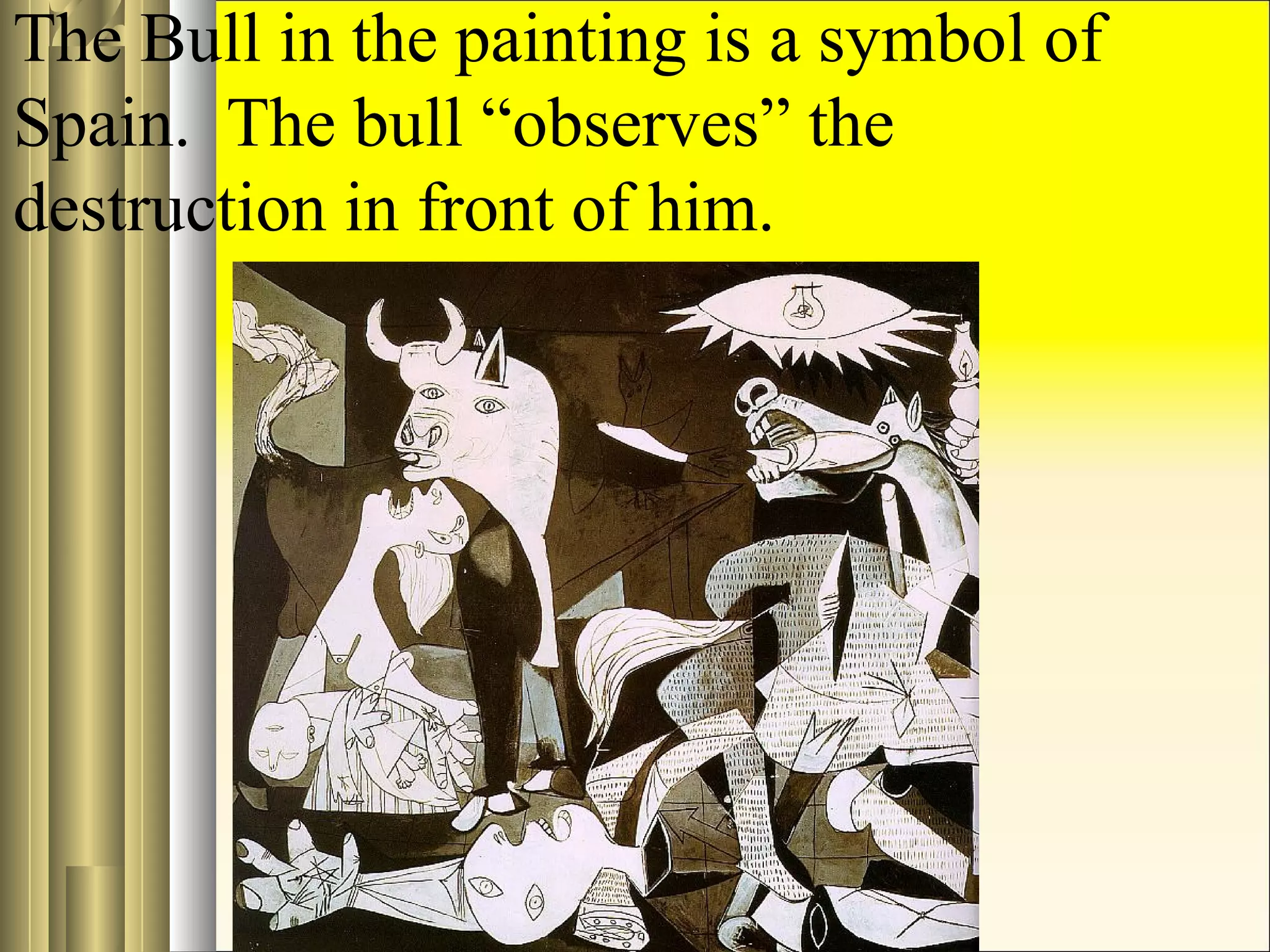The document discusses the rise of totalitarianism in 1930s Europe in response to the Great Depression. It describes how both communist and fascist governments in Germany, Italy, Russia, and Spain exercised total control over peoples' lives, restricting freedoms. Specifically, it outlines how the Spanish Civil War became a proxy war, with Hitler, Mussolini, and Stalin supporting opposing sides for military testing. The brutal 1937 bombing of Guernica by Hitler's forces inspired Picasso's famous anti-war painting.











































































